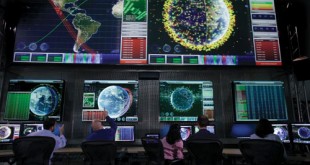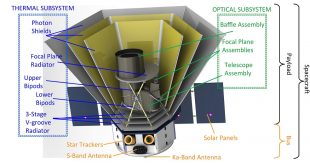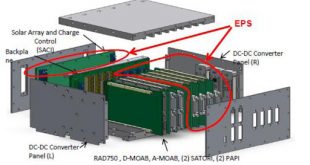Introduction As humanity’s thirst for knowledge about the cosmos continues to grow, so does our ambition to explore the mysteries of our solar system and beyond. Interplanetary Vehicles (OTVs), also known as orbital transfer vehicles, have emerged as the workhorses of modern space exploration, enabling us to traverse the vast …
Read More »Unlocking the Future of Secure Interplanetary Communication with Free Space Optical (FSO) Technology
Introduction In the vast expanse of space, the need for fast, secure, and reliable communication is paramount. Traditional radio waves, though effective, have their limitations, especially when dealing with vast distances and crowded radio frequencies. Enter Free Space Optical (FSO) communication, a cutting-edge technology that promises to revolutionize interplanetary communication …
Read More »Empowering the Lunar Future: Advanced Power Distribution and Transmission Technologies for Moon Exploration and Colonization
Introduction: In our quest for lunar exploration and potential colonization, securing a reliable and efficient power supply is paramount. Cutting-edge technologies in power distribution and transmission are at the forefront of lunar missions, serving as the lifeblood of future lunar bases and settlements. In this article, we delve into the …
Read More »Guiding the Way: GNC Systems in Deep Space Exploration and Colonization
Introduction: The vast cosmos has always beckoned to humanity’s adventurous spirit, and with each passing day, we move closer to realizing the dream of deep space exploration and colonization. As humanity looks to the stars and envisions a future among the cosmos, the role of Guidance, Navigation, and Control (GNC) …
Read More »Breaking the Cosmic Silence: Quantum Communications Across Interstellar Space
Imagine a future where we can communicate seamlessly across the vast distances of interstellar space, bridging the gap between stars and potentially connecting with extraterrestrial civilizations. While this may seem like the stuff of science fiction, a team of physicists at the University of Edinburgh’s School of Physics and Astronomy …
Read More »Navigating the Cosmos: Space Communication Protocols
Introduction In the vast expanse of space, where distances are measured in light-years, and obstacles like planets and celestial bodies can disrupt signals, maintaining seamless communication is no easy task. Yet, the success of space missions, from exploring distant planets to sending crucial data back to Earth, hinges on reliable …
Read More »Ensuring Space Security: SSA, SDA, and Space Battle Management
Introduction: In an era marked by the increasing militarization of outer space, the United States Department of Defense (DOD) has embarked on an ambitious mission in recent years—to enhance its Space Situational Awareness (SSA), Space Domain Awareness (SDA), and Space Battle Management capabilities. With several nations developing anti-satellite weapons and …
Read More »Lunar 4G/5G: Connecting the Moon and Beyond
Introduction: The Moon, Earth’s celestial neighbor, has long captured the imagination of humanity. From the Apollo missions of the 20th century to the exciting plans for future lunar exploration, our fascination with the Moon persists. As we gear up for a new era of lunar exploration, one crucial aspect to …
Read More »Pioneering the Cosmos: The Crucial Role of Spacecraft Thermal Control Subsystems (TCS) in Future Space Exploration and Colonization
Introduction As we venture into the limitless expanse of space with aspirations of exploration and colonization, spacecraft face an unprecedented set of challenges. Beyond Earth’s protective embrace, these vessels must endure extreme temperature fluctuations that range from searing heat in direct sunlight to bone-chilling cold in the shadows of celestial …
Read More »Navigating the Cosmos: The Marvels of Spacecraft Avionics
Introduction: The exploration of outer space has been one of humanity’s greatest achievements, driven by innovation and cutting-edge technology. At the heart of every successful space mission lies a complex and highly sophisticated system known as spacecraft avionics. These electronic systems serve as the lifeblood of aircraft, artificial satellites, and …
Read More » International Defense Security & Technology Your trusted Source for News, Research and Analysis
International Defense Security & Technology Your trusted Source for News, Research and Analysis


